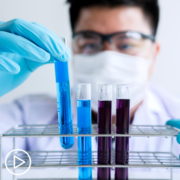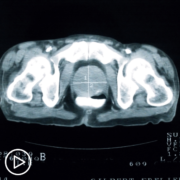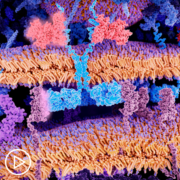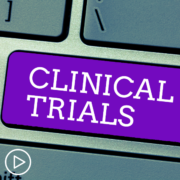How Is AML Treatment Effectiveness Monitored?
How Is AML Treatment Effectiveness Monitored? from Patient Empowerment Network on Vimeo.
How can acute myeloid leukemia (AML) treatment effectiveness be monitored over time? Expert Dr. Ellen Ritchie explains when testing is typically done following AML treatment, which methods are used for monitoring, and when retesting may be appropriate.
Dr. Ellen K. Ritchie is assistant professor of medicine and a member of the Leukemia Program at the Weill Cornell Medical College of Cornell University and the New York Presbyterian Hospital. More about Dr. Ritchie, here.
Related Resources:

|

|
Transcript:
Katherine:
Once a patient has begun treatment, how do you monitor whether it’s working?
Dr. Ritchie:
So, one of the more frustrating things about being an AML patient, is you don’t know right off the bat whether or not that you have gone into remission. So, what happens is you receive the chemotherapy, and the day you start chemotherapy is really day one. And somewhere around day 14, you’re at your lowest point. So, your blood counts are low, and you often feel really terrible, and you really wonder, is this working? But unfortunately, I can’t really tell you. Some institutions do bone marrow biopsies if you have intensive chemotherapy on day 14, or if you’re getting venetoclax (Venclexta) therapy somewhere around day 21 to look and see whether they still see leukemia cells, but the utility of that is different per institution.
The real test of whether chemotherapy x, is at the end of about 28-35 days, are your blood counts coming up, and are you making normal blood cells. Are you making platelets, which are the part of the blood that clots the blood? Or are you making neutrophils, which are the important cells needed to help you fight infection. So, the real proof of a remission, is are your platelets over 100,000? Is your neutrophil count over 1,000? And when we look in the bone marrow around that time, do we see normal cells developing and no leukemia?
Katherine:
How often should testing take place? And should patients be retested over time?
Dr. Ritchie:
So, the bone marrow biopsy is done frequently once you have a diagnosis of acute leukemia. So certainly, it’s done upon diagnosis of the disease.
And as I mentioned earlier in certain institutions, about halfway through your chemotherapy cycle, they’ll do a bone marrow biopsy to see whether or not they see any residual leukemia cells. That’s not done everywhere, and it’s done differently depending upon institutions sometimes. At the end of the chemotherapy treatment, if you recover your blood counts, we do a bone marrow biopsy to confirm a remission. If by day 35, we haven’t seen that your blood counts are recovering, we may do a bone marrow biopsy to see whether or not we see leukemia cells in there, or early recovery. So, you’re definitely going to have bone marrows at those time points. If you’ve gone into remission, it depends on what we’d do next as to when you would have another bone marrow biopsy. So, if you’re going to bone marrow transplant you may have one more biopsy, just prior to going into transplant, and another biopsy at the end of the first month after transplant.
If you’re going to have what we call ongoing therapy, roughly every three or four months, we may do a bone marrow biopsy to determine whether or not the remission is holding. If during ongoing therapy, we see that there is blood count abnormalities that we weren’t expecting, that might be a reason that we would do a bone marrow biopsy. And that’s unpredictable as to when that would be.











